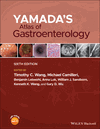Hepatic fibrosis and cirrhosis
Summary
This chapter provides additional images of interest in the area of liver fibrosis, and includes images spanning basic science to clinical concepts. One of the most important issues in the field relates to the cellular source of extracellular matrix (i.e., fibrosis) in the liver. A number of effector cells have been identified and have been advanced as critical to the fibrogenic response; these include portal fibroblasts, fibrocytes, mesenchymal cells derived from hepatocytes through epithelial–mesenchymal transition, and hepatic stellate cells. Measurement of fibrosis is important for several reasons. Fibrosis is important prognostically, and numerous studies have emphasized that the degree of fibrosis informs later outcome, including mortality. Available evidence suggests that fibrosis is reversible or may revert to some extent in many different organs. From a clinical standpoint, fibrosis reversion may take many forms. Cirrhosis has several different gross histological appearances. Micronodular cirrhosis is typically believed to occur in patients with alcoholic or nonalcoholic steatohepatitis.



